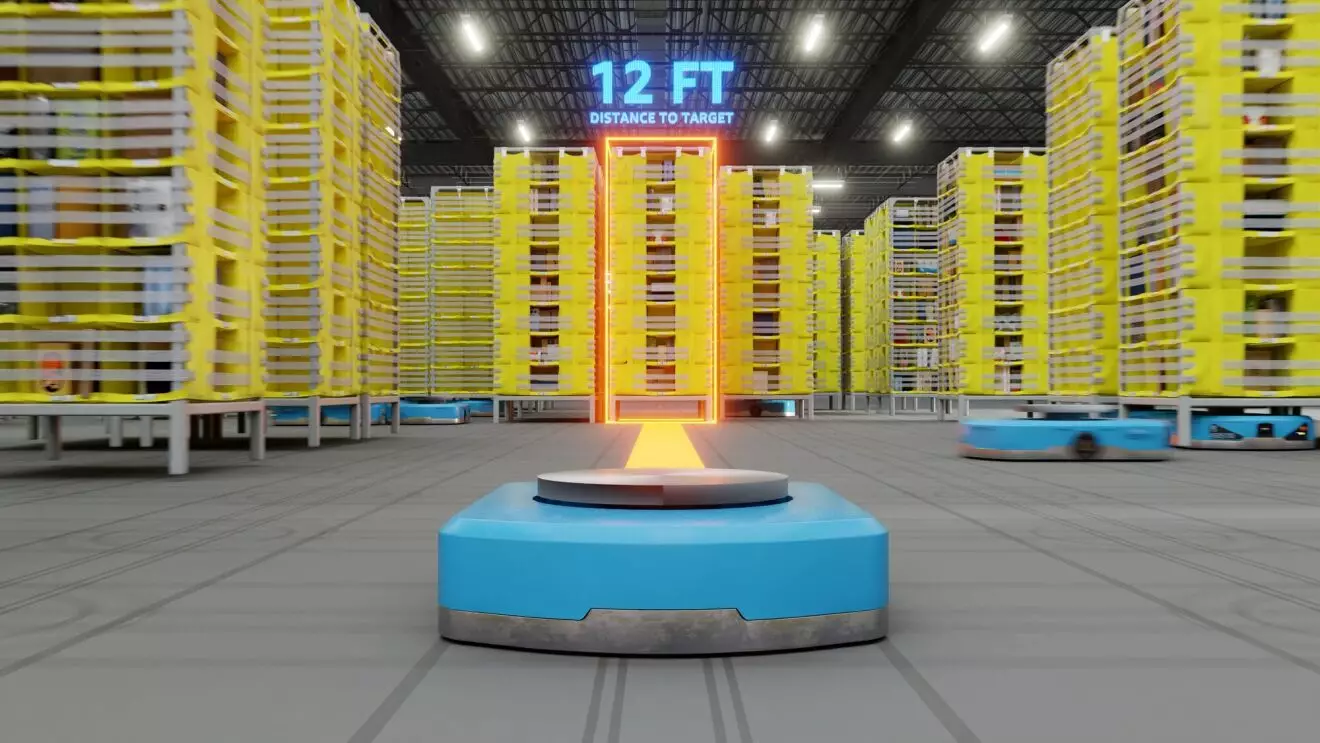The rapid proliferation of Amazon’s robotic workforce is a stark testament to the transformative power of automation. Nearly 13 years in the making, the deployment of one million robots signifies more than just technological achievement; it heralds a seismic shift in the landscape of global commerce and labor. Although Amazon’s human workforce outnumbers its automation—by approximately 1.56 million employees—this comparison is almost trivial given the disparity in roles, efficiency, and potential for scalability. The milestone underscores a strategic pivot: automation isn’t just a supplementary tool but a core pillar of Amazon’s operational philosophy. Each robot, from the early days of simple machinery to the sophisticated Vulcan model, exemplifies the relentless pursuit of efficiency that corporations worldwide are eager to emulate.
This monumental scale of robotic integration raises fundamental questions about the future of employment and the flow of human labor. While some may view this as an ominous harbinger of job displacement, others perceive it as an evolution toward more meaningful work. With robots handling repetitive tasks, humans can focus on oversight, innovation, and complex problem-solving—areas where human ingenuity remains irreplaceable. However, this optimistic narrative relies heavily on the assumption that workers will be transitioned smoothly into more rewarding roles—a promise that history routinely complicates.
Smart Automation: Enhancing While Supplanting?
The integration of artificial intelligence (AI) into Amazon’s fleet signals that these machines are no longer mere mechanical assistants but intelligent agents capable of adaptive behavior. The recent introduction of DeepFleet—a generative AI foundation model—is a strategic leap toward creating a smarter, more synchronized robotic ecosystem. By improving travel time for their automata by roughly 10%, Amazon aims to accelerate delivery times while reducing operational costs. This technological leap isn’t just a marginal gain; it’s a glimpse into a future where logistics are virtually self-optimized.
Yet, amid these advancements lies a disturbing undercurrent—an unsettling denial of human relevance. The narrative that robots are simply making human workers more efficient and better compensated is comforting but not entirely believable. The reality of automation is often more nuanced: job roles evolve, yes, but often at the expense of the workers’ original expertise and livelihood. The case of Neisha Cruz, who transitioned from physical picker to oversight supervisor with a significant salary boost, illustrates a silver lining. Still, the broader picture remains murky. Will most workers experience such upward mobility, or will they be left dislocated, their skills rendered obsolete in the relentless march of technology?
Implications for Society and the Economy
What does this relentless push toward automation mean for society at large? The statistics are staggering: a sixfold increase in packages shipped per worker annually, translating to billions of deliveries each year. While these figures showcase efficiency and scale, they also obscure the human stories behind these numbers. As robots take on more roles, the questions surrounding economic inequality, labor rights, and social stability become more pressing.
The narrative that automation will elevate human employment to more meaningful and better-paid roles can be overly optimistic. History provides ample examples where technological disruption causes short-term hardship before eventual adaptation. But unlike past innovations, modern automation scales exponentially and encroaches upon jobs that were previously considered secure. The concern isn’t solely about job loss but about the commodification of human effort and the potential for widening societal disparities.
Moreover, the ethical implications of deploying increasingly autonomous robots cannot be ignored. Vulcan, with sensory capabilities including “touch,” exemplifies the boundary-pushing potential of AI. As these machines grow smarter and more self-reliant, humans must grapple with questions of control, accountability, and the moral boundaries of robotic intelligence. The promise of efficiency must be weighed against the risks of dehumanization and the erosion of personal craftsmanship in the pursuit of profit.
Decrying automation as a purely negative force would be shortsighted. Yet, ignoring its disruptive potential is irresponsible. The true challenge lies in navigating these transformative waters without sacrificing the dignity, agency, and well-being of human workers. As Amazon and other giants push forward, it is imperative that society remains vigilant—questioning not only how efficiency is achieved but also at what cost. The future belongs to those who can harness technological progress deliberately, ensuring that the human element remains intact amidst the march toward an automated utopia.

